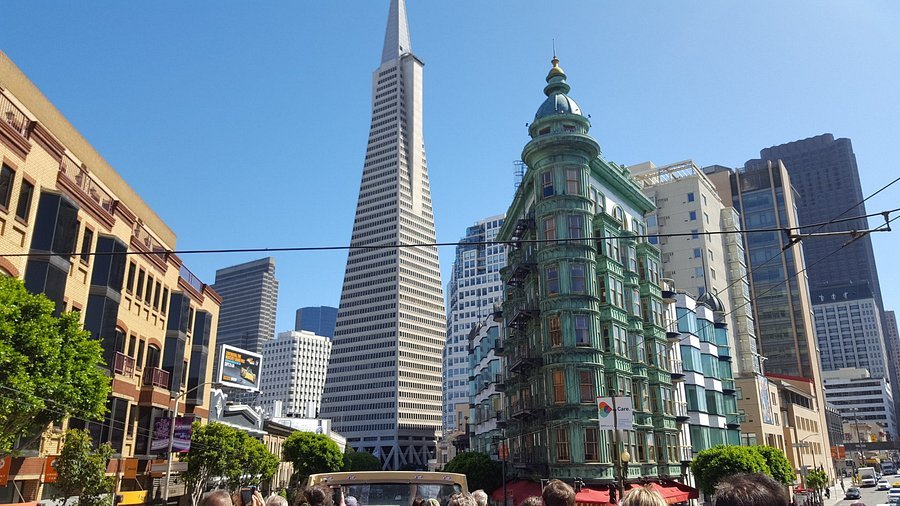The story of Transamerica Corporation, a financial giant originating from the United States, begins with the vision of a man named Amadeo Giannini. Born in 1870 in San Jose, California, Giannini was the son of Italian immigrants who saw immense potential in the financial world at the dawn of the 20th century. Inspired by his desire to provide financial access to the working class and middle class, he founded the Bank of Italy in 1904 in San Francisco, which later became the precursor to Transamerica Corporation.
Giannini was a visionary who firmly believed that everyone, regardless of their background, deserved access to financial services. At a time when banks catered exclusively to the elite, the Bank of Italy offered loans to immigrants and hardworking individuals who were often overlooked by major banks. His strategy was simple yet revolutionary: empower ordinary people through trust and accessibility.
The 1906 San Francisco earthquake marked a pivotal moment in his career. While other banks collapsed or remained paralyzed, Giannini boldly safeguarded his bank’s funds, transporting them to safety on a wagon concealed with wine barrels. He then set up an emergency operation, lending money to city residents to rebuild their lives. This not only saved many from economic ruin but also cemented the bank’s reputation as a financial institution genuinely committed to community needs.
In 1928, the Bank of Italy merged with the Bank of America in Los Angeles to form the Bank of America National Trust and Savings Association. However, Giannini also established a holding company, Transamerica Corporation, to manage various financial services under one umbrella.
The Financial Focus and Expansion Strategies That Propelled Transamerica’s Growth
In its early years, Transamerica concentrated on banking and credit services catering to individuals and small businesses. Over time, the company expanded its portfolio by venturing into life insurance and investments, which became the cornerstone of its success in subsequent decades.
One of Transamerica’s primary strategies was diversification. Unwilling to rely solely on banking, the company began acquiring insurance firms, investment companies, and other financial service providers. This approach not only broadened its reach but also created financial stability, enabling it to weather global economic challenges, such as the Great Depression of the 1930s.
Transamerica also distinguished itself through innovative marketing and operations. In an era when communication was limited, the company embraced strong brand recognition, exemplified by the iconic Transamerica Pyramid in San Francisco. Built in 1972, the tower became a symbol of the company’s robust presence in the financial world, even though the corporate headquarters later moved to Baltimore.
One of the company’s smartest moves was its early adoption of technology in its operations. While many financial institutions still relied on traditional methods, Transamerica embraced computer technology to manage data and transactions. This not only improved efficiency but also allowed the company to deliver faster and more accurate services to its customers.
The Founding Family’s Struggles and Enduring Legacy
Giannini was not just a banker but a pioneer who championed financial inclusion at a time when it seemed unachievable. His efforts were supported by his family, who played a crucial role in preserving and expanding his vision.
His son, Mario Giannini, took up the mantle of leadership and was instrumental in ensuring that the company remained relevant amid changing times. The Giannini family upheld principles that prioritized service to the community. They believed that a great business should also have a positive social impact, a belief that continues to underpin Transamerica’s corporate culture.
However, the journey was far from smooth. Like any major corporation, Transamerica faced internal and external challenges, including regulatory pressures, market competition, and shifts in global economic policies. But the spirit of innovation and commitment to customers, instilled by its founder, provided a strong foundation for overcoming these hurdles.
Transamerica’s Scale and Presence Today
Today, Transamerica Corporation stands as one of the largest financial institutions in the world, particularly in the sectors of life insurance and asset management. As part of the Aegon Group, a financial conglomerate based in the Netherlands, Transamerica manages assets worth trillions of dollars and serves millions of customers across numerous countries.
Recent financial reports reveal that Transamerica oversees more than $400 billion in assets, with annual revenues reaching tens of billions of dollars. The company offers a wide range of products, including life and health insurance, retirement plans, and investment services. This diversification has enabled it to remain competitive in an increasingly complex and dynamic industry.
While the Transamerica Pyramid remains an iconic symbol of the company’s long history, the corporation’s reach extends far beyond its origins. With a solid foundation, an innovative vision, and a commitment to service, Transamerica Corporation is not only a financial giant but also a testament to how a business can grow without losing the core values that made it successful from the beginning.

